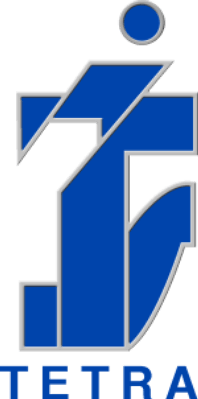Tetra provides monitoring, troubleshooting, and IT environment security solutions using ELK Stack.
Benefits of ELK stack
· ELK is a total log-analysis platform for the search, analysis, and visualization of log-generated data from different machines.
· ELK can securely analyze and visualize data in real-time, from any source and format.
· ELK can perform centralized logging to assist identify any server and application-related issues across multiple servers and correlate the logs during a particular time-frame.
· ELK is geared to handle big data to supply crucial business insights.
· ELK is easy to use, set up and is user friendly.
· As an open-source program, Elk is extremely cost-effective.
Features of ELK
Features of Elastic search:
1. It is used to index any kind of heterogeneous data.
2. It uses standard RESTful APIs and JSON.
3. Full-Text Search.
4. It uses Near Real-Time (NRT) search with fast results.
5. Sharded, replicated searchable, JSON document store.
6. Schema-free, REST & JSON based distributed document store.
7. Scalability doesn’t affect the query performances — you ask Elasticsearch running on one node an equivalent way you'd during a 300-node cluster.
8. It consists of Lots of client libraries available to interact with elastic search in programming — Java, Python, .NET, SQL, and PHP. Plus, the elastic community has contributed more.
9. It has powerful features — security, monitoring, alerting, reporting, graph exploration, machine learning, and more.
Features of Logstash:
1. It supports a wide range of inputs that pull in events from a large number of common sources like your logs, metrics, web applications, data stores, AWS services etc, all at an equivalent time.
2. Events are gone through each phase using internal queues, Logstash filters parse each event, identify named fields to create a structure, and transform them to converge on a standard format for easier, accelerated analysis and business value.
3. Has a range of outputs and this facilitates to route data where you would like.
4. Durability and security of nodes are guaranteed — If Logstash nodes happen to fail, Logstash guarantees at-least-once delivery for your in-flight events with its persistent queue. Events that aren't successfully processed are often shunted to a dead letter queue for introspection and replay. With the power to soak up throughput, Logstash scales through ingestion spikes without having to use an external queueing layer.
5. With monitoring and pipeline viewer features the user can easily observe and study a lively Logstash node or full deployment.
6. With Pipeline Management UI the user can centrally manage deployments with one UI.
Features of Kibana:
1. It is a powerful, real-time, front-end dashboard which comes with histograms, line graphs, pie charts, sunbursts, and more. Plus, you'll use Vega grammar to style your own visualizations. These charts are easily configurable.
2. Enables real-time search of indexed information.
3. Execute queries on data & visualize leads to charts, tables, and maps.
4. It comes with a configurable dashboard to slice and dice Logstash logs in Elasticsearch.
5. Capable of providing historical data within the sort of graphs, charts, etc.
6. Allow placing geodata on any map using Elastic Maps Service to see geospatial data.
7. Perform advanced statistic analysis on your Elasticsearch data with curated statistic UIs.
8. It can be used to analyze relationships with graphs with graph exploration and uncover the uncommonly common relationships in your Elasticsearch data.
9. It can be used to detect the anomalies hiding in your Elasticsearch data and explore the properties that significantly influence them with unsupervised machine learning features.
10. It can be used to update the dashboard with Canvas. It allows for adding logos, colours, and style elements. Moreover, canvas supports SQL.
11. It can be used to securely share the dashboard with others as an embed dashboard, share a link, or export to PDF or CSV files and send as an attachment.
12. It can be used to get more collaboration from others by organizing your dashboards and visualizations into Kibana spaces.
13. It supports a variety of apps and UIs.
14. It supports developer tools which are a strong thanks to helping developers interact with the Elastic Stack.
What’s New in ELK?
Like all other popular open-source projects, the ELK Stack is consistently and regularly updated with new features. Keeping au courant these changes is challenging, so this is a highlight of the new features introduced in major releases.
1. Elasticsearch: Elasticsearch 7.x is far easier to set up since it now ships with Java bundled. Performance improvements include a true memory circuit breaker, improved search performance and a 1-shard policy. additionally, a brand-new cluster coordination layer makes Elasticsearch more scalable and resilient.
2. Logstash: Logstash’s Java execution engine (announced as experimental in version 6.3) is enabled by default in version 7.x. After replacement of its old Ruby execution engine, it boasts better performance, reduced memory usage and overall provides a completely faster experience.
3. Kibana: Kibana has undergone some major facelifting with new pages and usefulness improvements. the most recent release includes a dark mode, improved querying and filtering and enhancements to Canvas.
4. Beats: Beats 7.x conform with the new Elastic Common Schema (ECS) — a brand new standard for field formatting. Metricbeat supports a brand-new AWS module for pulling data from Amazon CloudWatch, Kinesis and SQS. New modules were introduced in Filebeat and Auditbeat also.





